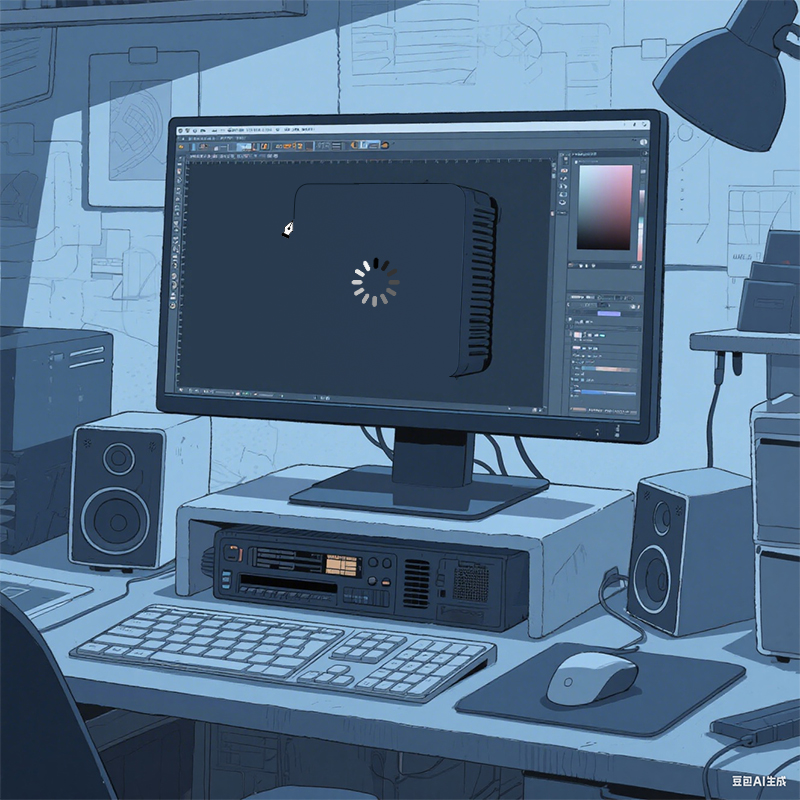Storage plays a critical role in how fast your computer runs and how safely your data is kept. In recent years, solid-state drives (SSDs) have gradually replaced hard disk drives (HDDs) as the primary storage in laptops and desktops. However, HDDs are still widely used for secondary storage, especially for large data backups. If you are confused about whether to buy an SSD or an HDD, this guide will help you understand their differences and make the best choice for your needs.

A hard disk drive (HDD) stores data on one or more spinning magnetic platters. A mechanical arm moves a read/write head to access or write data by changing the magnetic direction of tiny areas on the platters. This design is similar to an old record player, only much more precise.
HDDs are available mainly in 2.5-inch and 3.5-inch sizes, with the latter offering larger storage capacities. Because HDDs rely on moving parts, they generate more heat and noise and are more vulnerable to physical damage.
A solid-state drive (SSD) uses NAND flash memory chips, a controller, and a cache to store data electronically, with no moving parts. This makes SSDs faster, quieter, and more durable than HDDs.
Early SSDs used 2.5-inch SATA interfaces to fit into existing hard drive bays, but modern SSDs often use M.2 NVMe interfaces for higher speeds. The most common M.2 size is 2280, widely used in laptops and desktops.
HDDs have been around since 1956, when the IBM 650 RAMAC used 50 massive platters to store only 3.75MB of data. Over time, HDD technology improved significantly, with modern drives offering up to 22TB of storage while keeping the same physical size.
SSDs have a much shorter history. The first consumer SSDs appeared in netbooks in the late 2000s, with only 1GB or 2GB capacities. Today, NVMe SSDs can reach speeds over 7,000MB/s, and high-end consumer models offer up to 8TB of storage, making them ideal for demanding tasks.
In terms of SSD vs HDD performance, SSDs are much faster. A typical NVMe SSD can read and write data at thousands of MB per second, while HDDs are limited to around 150MB/s. This difference is obvious when booting your computer, launching applications, or loading large games.
HDDs are much cheaper for high-capacity storage. You can easily find an 8TB HDD for the price of a 1TB or 2TB SSD. If you need affordable bulk storage for photos, videos, or backups, HDDs are the better choice.
Because SSDs have no moving parts, they are more resistant to shocks, making them perfect for laptops and portable devices. HDDs, on the other hand, are more prone to mechanical failure but are easier to recover if data loss occurs.
SSDs consume less power, produce no noise, and usually rely on simple passive cooling. HDDs generate more heat (normal operating temperature: 30–50℃) and may require fans in high-capacity desktop systems.
When comparing SSD vs HDD lifespan, HDDs can last longer under constant power-off conditions, while SSDs have limited write cycles (measured in TBW). However, modern SSDs are designed to last for many years under normal use.

Your choice depends on how you use your computer:
Everyday Computing and Office Work: A 256GB–512GB SSD is enough for fast booting and smooth multitasking.
Gaming: SSDs reduce loading times and stuttering, giving you a better experience. Use a mixed solution: SSD for games and system, HDD for storing large game files.
Video Editing and 3D Rendering: NVMe SSDs (PCIe 4.0 or higher) are recommended for handling large files and frequent read/write operations.
Data Backup and Bulk Storage: HDDs remain the most cost-effective option for storing massive amounts of data.
For many users, the best solution is to combine both: SSD as a primary boot drive for speed, and HDD as secondary storage for capacity.
When deciding between SSDs and HDDs, consider speed, capacity, and budget. Choose an SSD if you need fast system performance or work with demanding applications, and choose an HDD if you need affordable storage for large amounts of data. A mixed storage approach can give you the best of both world
At Juhor Precision Technology, we specialize in developing reliable desktop memory, DDR modules, and SSDs for gaming, industrial control, and digital applications. Whether you need high-speed NVMe SSDs or cost-effective SATA SSDs, we have the right solution for your needs. Contact us today to upgrade your storage with confidence!